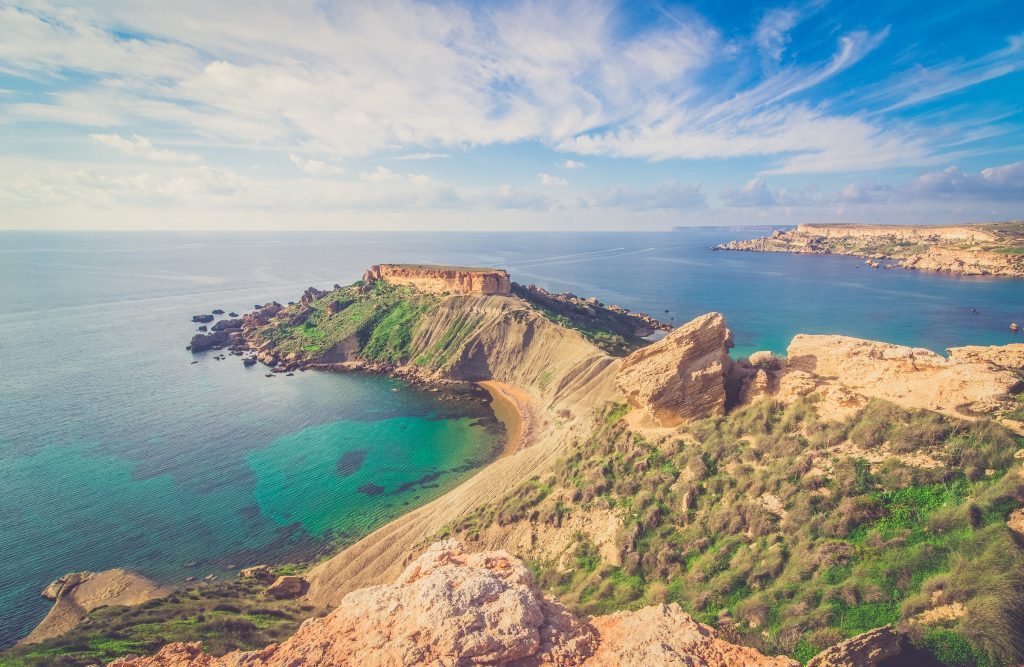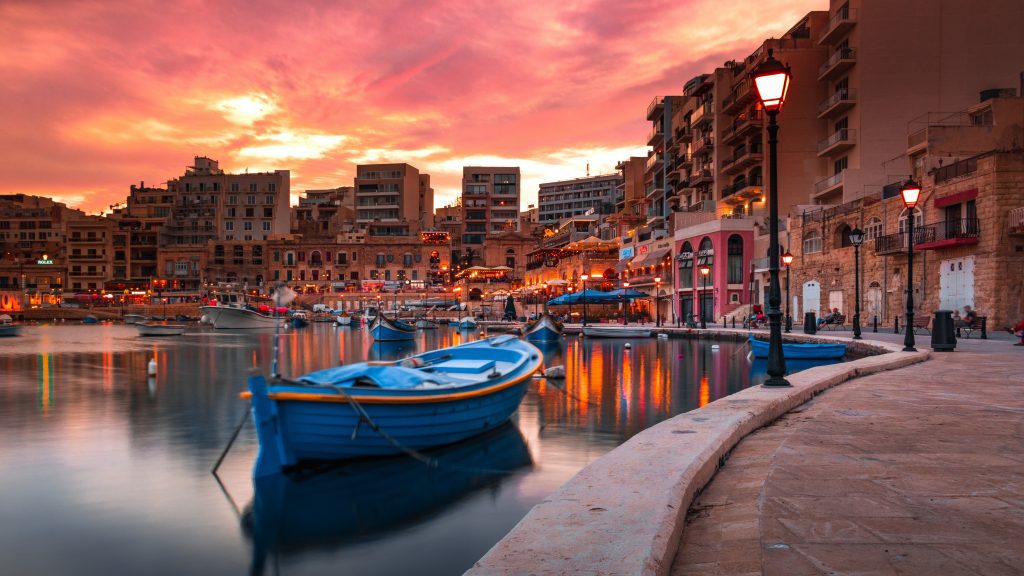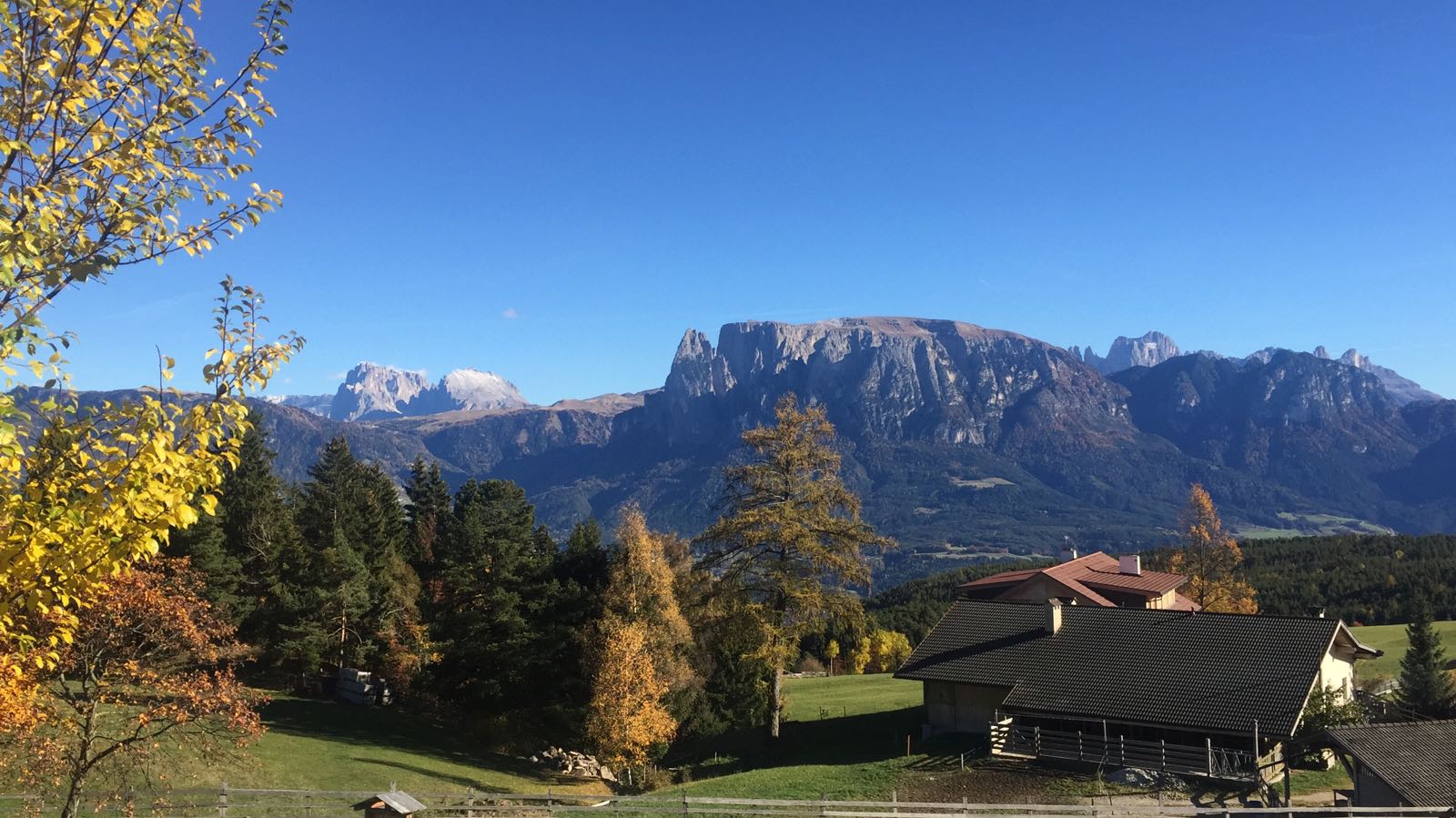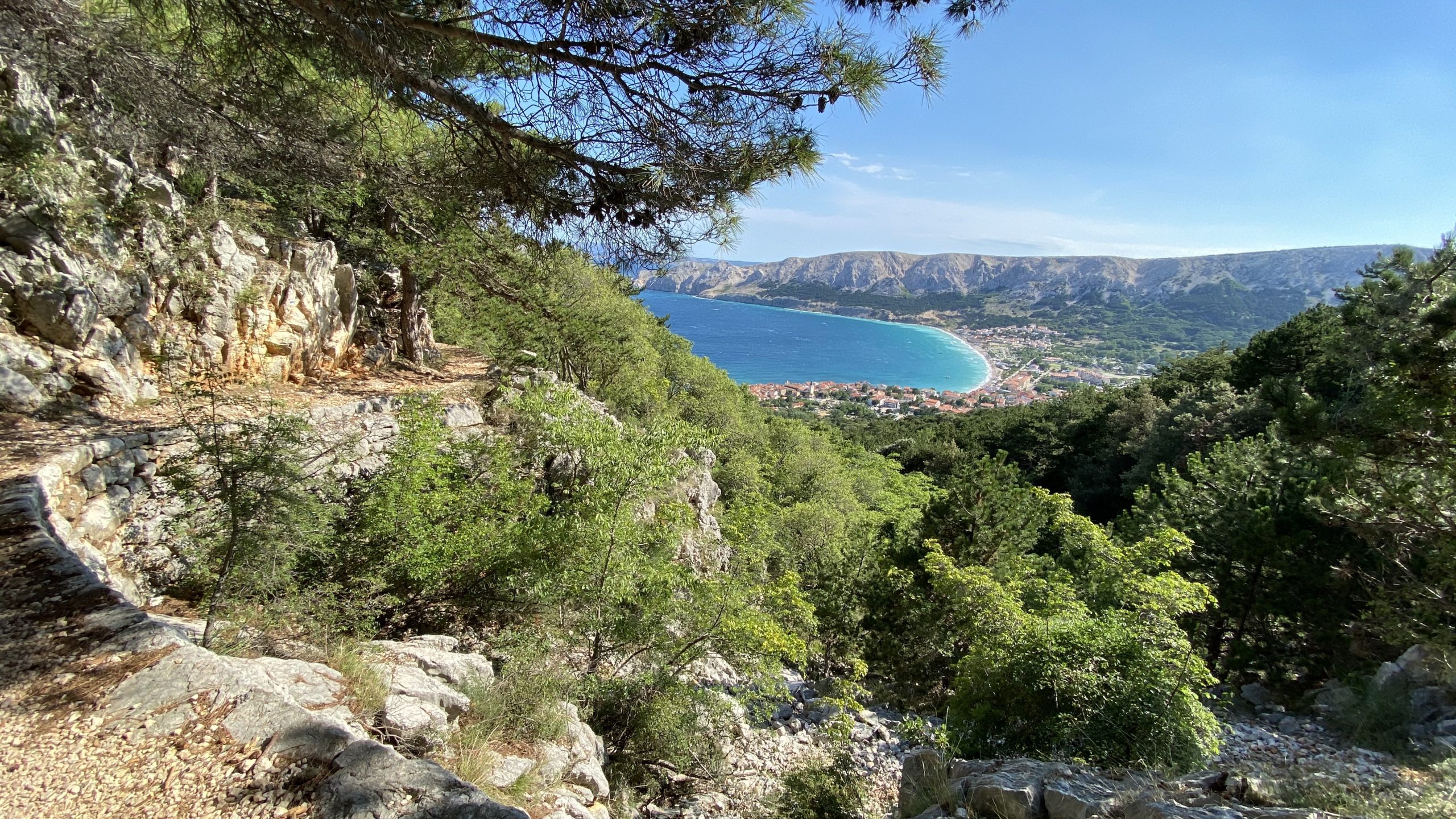Interesting landscapes, varied architecture, great swimming and diving, excellent cuisine, alluring architecture, 7,000 years of archaeological history and an appealing, sunny Mediterranean climate – all packed into one tiny archipelago. This is Malta.
Malta will appeal to:
- History buffs
- Architecture aficionados
- Diving/snorkeling enthusiasts
- Walking/trekking lovers (especially on Gozo)
- Foodies
- Those seeking the greatest variety of experiences in the smallest package!
The Basics
Malta lies in the south-central Mediterranean, about 100 km south of Sicily. Given this southerly location, it has a pleasant year-round climate with 300 days of sunshine, mild winters and hot summers. In fact, Malta’s capital of Valletta has the warmest winters of any European capital!
Malta is made up of three inhabited islands (plus four other uninhabited): the main island of Malta, by far the largest and where most of the population lives, smaller Gozo and tiny Comino with one hotel and (count ‘em!) three permanent residents. It’s the 10th smallest country in the world by land area, with only 316 km2, so nothing is ever far away.
For thousands of years before it gained independence in 1964 Malta has been settled, invaded or colonized by the Phoenicians, Greeks, Carthaginians, Romans, Arabs, Normans, Aragonese (northern Spain), French and British! Sheesh, maybe the better thing to mention is who wasn’t there! This means that Malta’s culture, architecture and cuisine (among other things) have had a variety of influences, making it a particularly intriguing destination for people interested in cultural travel.
Malta is a full member of the European Union and part of the internal border control-free Schengen Area. English is one of the official languages (the other is Maltese), so if you know enough English to understand this sentence you’re all set!
The international airport offers flights to most major European airports as well as a number of cities in northern Africa and the Middle East. Getting around once in Malta is easy – bus service is excellent, regular ferries run the short distance between Malta and Gozo, and rental cars are readily available. And with over 1,000 km of cycle paths, bicycles or e-bikes are a great way of getting around (more on that later). Electric scooters can also be rented by the minute in many cities and towns. Just don’t forget, traffic moves on the left side!

Sustainability
Malta may not be widely recognized as a sustainable travel mecca, but the Malta Tourism Authority has been a member of the Global Sustainable Tourism Council (GSTC) since 2017 and has granted Eco-Certification overseen by the GSTC to numerous hotels and farmhouses. As mentioned above, getting around in an Earth-friendly manner is also easy in Malta, so once you’re there making your stay sustainable is pretty much a breeze!
Of course, we can’t ignore that just about all visitors will arrive by airplane, so if you want to be a responsible traveler this isn’t a destination to just “pop in” and visit for a long weekend. Not only do short trips by plane result in very high CO2 emissions per day traveled, but you’ll also miss out on a lot by rushing your stay in these beautiful and interesting islands. So, slow down and stay a while!
Finally, one big concern for these islands which tourists should be aware of is the shortage of fresh water. Malta is in fact one of the top 10 water-scarce countries in the world. So please, please keep this in mind when you visit, and do your utmost to not waste any of this precious resource!
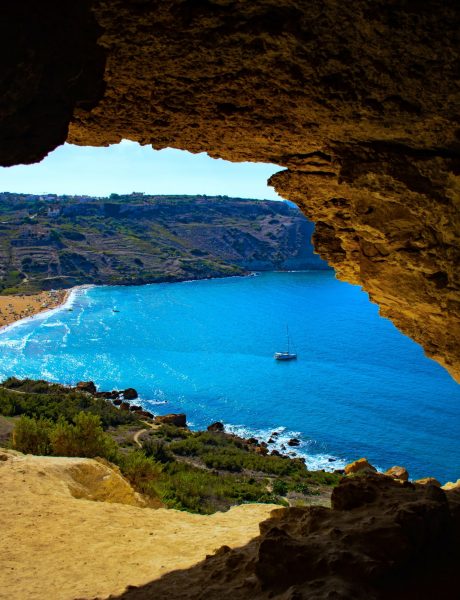
Active Travel
If you like to get your heart pumping, you won’t be disappointed by the number of ways to be active during your visit to Malta. By no means is this an exhaustive list, but in Malta you can: hike, cycle, mountain bike, horseback ride, rock climb, abseil, kayak, sail, dive, snorkel and of course swim! Here’s a few resources to get you started in exploring some of the top activities available to the active traveler.
Hiking: everything from short, easy walks to more challenging multi-day treks are possible. Spring, Autumn and Winter, when sunshine is generally plentiful but temperatures not too hot, are the ideal times of year for hiking. Spring is especially beautiful, when flowers carpet the fields and the landscape is at its lushest. A good selection of hiking possibilities can be found here.
Diving and snorkeling: Malta is generally considered to be one of the best snorkeling and diving locations in the Mediterranean, and the waters around Gozo and Comino are especially noted for their excellent water clarity. The variety of marine life and the numerous cave and wreck diving opportunities, along with the availability of diving courses in multiple languages, make Malta a great choice for snorkelers and divers of all ability levels. You can find more information about diving in Malta here.
Rock climbing, ziplining and abseiling: steep cliffs are a common feature of Malta’s landscape, and there are over 1,300(!) different climbing routes on all three inhabited islands. Beginners needn’t fret, however; several operators offer expert guided, half- or full-day introductory climbs for those with little or no experience. And ziplining, of course, requires no particular skills or experience, only general good health. MC Adventure offers all of these activities and more, and they get great reviews from past participants.
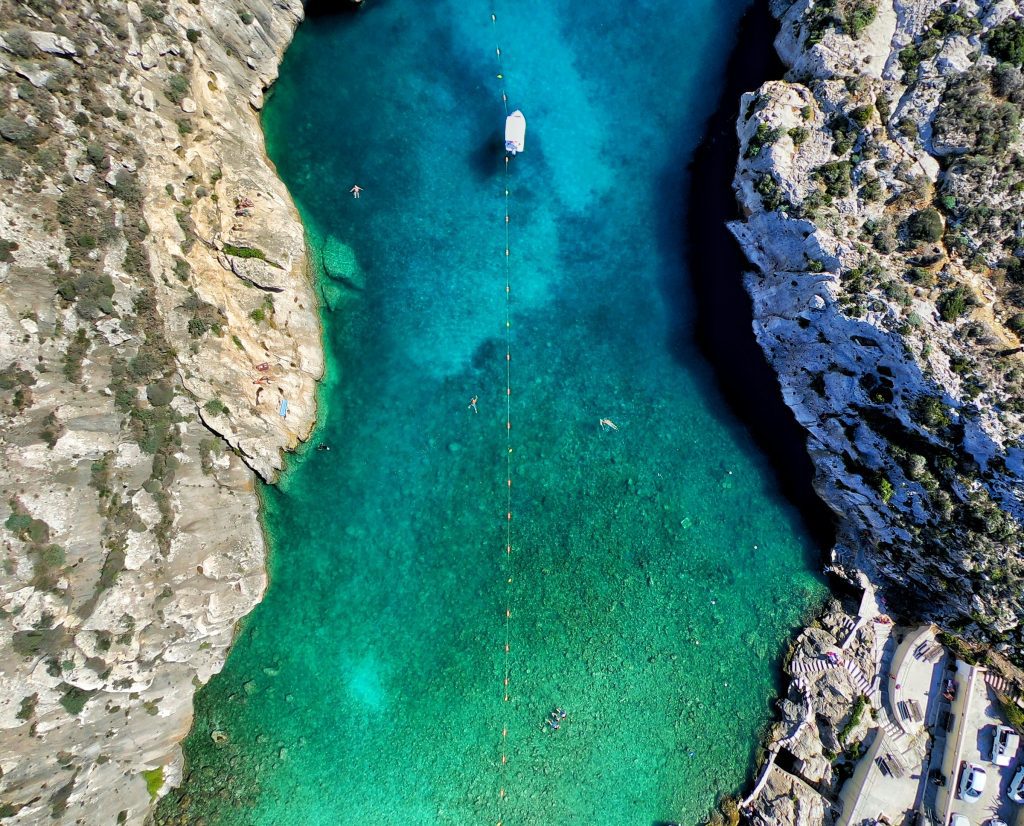
Culinary Travel
Malta is perhaps one of Europe’s best examples of a culinary melting pot. Remember all those civilizations who influenced Malta’s historical development? Well, many of them also left an imprint on the culinary evolution of these islands.
The good people over at Malta.com summed up the country’s cuisine pretty well, so I’m actually just going to quote them: “The recipes of Maltese cuisine are a tangible and tasteful proof of the various influences the island had from other countries and cultures that came across its history. The Italian imprint is probably the strongest, particularly Sicily and the South. . . . Maltese gastronomic legacy of its past includes also Spanish, Arabic and British influences.”
Malta also has a very old wine culture, and while production is small and very little Maltese wine is exported, several wineries produce vintages mostly for domestic consumption and can be visited for tastings. There are two native grape varietals, Gellewza (red) and Girgentina (white), but many other internationally known varietals such as Chardonnay, Syrah and Merlot are also produced.
My Tips & Picks
Mid-range Hotel Tip: the Duke Boutique Hotel in Victoria on the island of Gozo, is a sleek 3-star, Eco-Certified property with fantastic views of the Basilica from its rooftop terrace. It’s centrally located for exploring Victoria and all parts of the island and offers comfortable rooms and suites (some with their own outdoor jacuzzi!) with breakfast.
Luxury Hotel Tip: The Phoenicia Malta has long been regarded as one of the top hotels in the country. It has lovely art deco architecture and is located in the heart of Floriana, right next to the old city walls of Valletta. All the amenities one expects in a 5-star property are there, including posh rooms (most with enviable views), several restaurants and bars, indoor and outdoor pools and a complete wellness area. And an added bonus, it is also Eco-Certified!
Tip for Families and Nature Lovers: Numerous “Razzetts”, or traditional farmhouses on Gozo have been converted into holiday homes. Most have multiple bedrooms and their own pool, some are located in villages and others in the countryside, but all of them have comfort, charm and space to relax and enjoy the peaceful surroundings.
Restaurant Pick: Rubino is one of the top restaurants in the country for traditional Maltese cooking alongside Italian favorites, with a constantly changing menu. It’s family-run, with a cozy and very unpretentious atmosphere, good coffee and an extensive wine list. Book ahead, it’s popular!!
Active tours: MC Adventure, who I mentioned above regarding rock climbing, offers all sorts of other activities as well…a great resource if you’re into high-adrenaline sports, or something a bit calmer such as stand-up paddle boarding.
So, if you’re already in the planning stages for a trip I hope this has been a helpful resource, and if you’re just reading up on Malta as a destination, I hope I’ve managed to ‘whet your appetite’. Thanks for reading!
